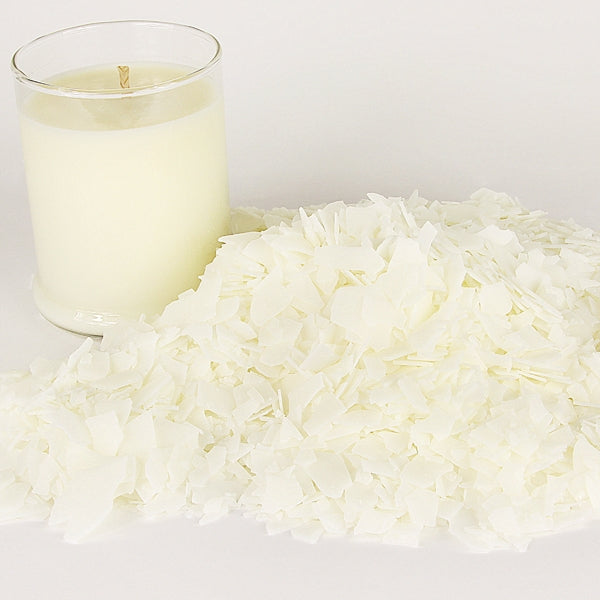Produce Atmosphere with Handmade Soy Wax Candles and Home Fragrance
Produce Atmosphere with Handmade Soy Wax Candles and Home Fragrance
Blog Article
From Wick to Wax: Comprehending the Chemistry Behind Soy Wax Candles and Their Ecological Effect
As we brighten our areas with the cozy glow of candle lights, there exists a realm of detailed chemistry behind the relatively simple act of lighting a soy wax candle. The choice in between soy and paraffin wax expands beyond plain visual appeals, diving into the world of ecological influence and the really make-up of the materials. Comprehending the molecular framework of soy wax and its combustion process sheds light on the discharges launched into our surroundings. Join us as we unravel the scientific details behind soy wax candles and explore their implications on our atmosphere.
Soy Wax Vs. Paraffin Wax
When comparing soy wax and paraffin wax for candle light making, it is vital to comprehend the distinct qualities and benefits of each material. Soy wax is an all-natural, renewable energy originated from soybean oil, making it eco-friendly and naturally degradable - candles. In contrast, paraffin wax is a by-product of oil refining, which elevates concerns regarding its ecological influence and sustainability
Soy wax candle lights melt cleaner and give off much less residue compared to paraffin wax candles, making them a healthier option for indoor air quality. Furthermore, soy wax has a lower melting factor, allowing for a longer-lasting candle light that distributes scent better. Paraffin wax, on the other hand, tends to shed faster and less easily, potentially releasing harmful chemicals into the air.
From a sustainability viewpoint, soy wax is preferred for its biodegradability and eco-friendly sourcing, lining up with the growing customer preference for ecologically conscious items. While paraffin wax has been a traditional choice in candle light making because of its affordability and convenience of usage, the change towards environment-friendly choices like soy wax is obtaining momentum in the sector.
Chemical Structure of Soy Wax

Burning Refine in Soy Candles
The chemical make-up of soy wax straight influences the burning process in soy candles, influencing aspects such as shed time, fragrance release, and ecological influence. When a soy candle is lit, the warm from the flame melts the wax near the wick. This fluid wax is then created the wick due to capillary activity. As the fluid wax reaches the fire, it undertakes and vaporizes burning. The burning process involves the vaporized hydrocarbons in the wax responding with oxygen in the air to produce warmth, light, water vapor, and carbon dioxide.
The combustion efficiency of soy candle lights is influenced by the pureness of the soy wax and the quality of the wick. A clean-burning soy candle light with a correctly sized wick will certainly create a steady fire and lessen residue development. This not just prolongs the burn time of the candle but also boosts the release of scents. Furthermore, soy wax candles have a lower ecological impact contrasted visit the website to paraffin candles as a result of their sustainable and eco-friendly nature.

Ecological Benefits of Soy Wax

Taken into consideration a lasting alternative to standard paraffin wax, soy wax provides significant environmental advantages that make it a preferred selection amongst eco-conscious consumers. One considerable advantage of soy wax is its sustainable sourcing. Soy wax is originated from soybean oil, which is primarily cultivated in the USA. The cultivation of soybeans helps support neighborhood farmers and lowers the reliance on non-renewable fossil gas utilized in paraffin wax production. In addition, soy wax is eco-friendly, indicating it breaks down naturally without launching unsafe contaminants right into the atmosphere. This characteristic makes soy wax candle lights a much more ecologically pleasant option contrasted to paraffin wax candles, which are made from petroleum, a non-renewable source. In addition, soy wax burns cleaner and creates less residue than paraffin wax, contributing to better interior air high quality and minimizing the need for cleansing and upkeep. On the whole, the environmental advantages of soy wax line up with the expanding need for eco-friendly and sustainable items out there.
Recycling and Disposal Factors To Consider
Reusing and correct disposal of soy wax candle lights play a critical role in maintaining ecological sustainability and decreasing waste in areas and families. When it comes to recycling soy wax candles, the first step is to guarantee that the content candle has melted completely.

In terms of disposal, if recycling is not an alternative, soy wax candles are biodegradable and can be safely thrown away in a lot of home waste systems. It is constantly advised to check with local reusing centers or waste monitoring solutions for certain guidelines on candle disposal to make certain appropriate handling and environmental defense.
Conclusion
Finally, the chemistry behind soy wax candle lights reveals their ecological advantages over paraffin wax candles. Soy wax, originated from soybean oil, burns cleaner and creates less soot when contrasted to paraffin wax. The burning process in soy candle lights is more reliable, resulting in a longer and extra even melt. Additionally, soy wax is eco-friendly and sustainable, making it a more lasting selection for candle production. Reusing and proper disposal of soy wax candles better contribute to their ecological effect.
When comparing soy wax and paraffin wax for candle production, it is important to comprehend the distinctive features and benefits of each material (soy candles).Soy wax candles burn cleaner and send out less soot compared to paraffin wax candles, making them a much healthier option for interior air top visit this web-site quality.Taken into consideration a lasting alternative to typical paraffin wax, soy wax offers noteworthy environmental benefits that make it a prominent choice amongst eco-conscious customers. Soy wax burns cleaner and produces less residue than paraffin wax, adding to much better indoor air high quality and minimizing the requirement for cleansing and upkeep.In verdict, the chemistry behind soy wax candle lights discloses their ecological advantages over paraffin wax candles
Report this page